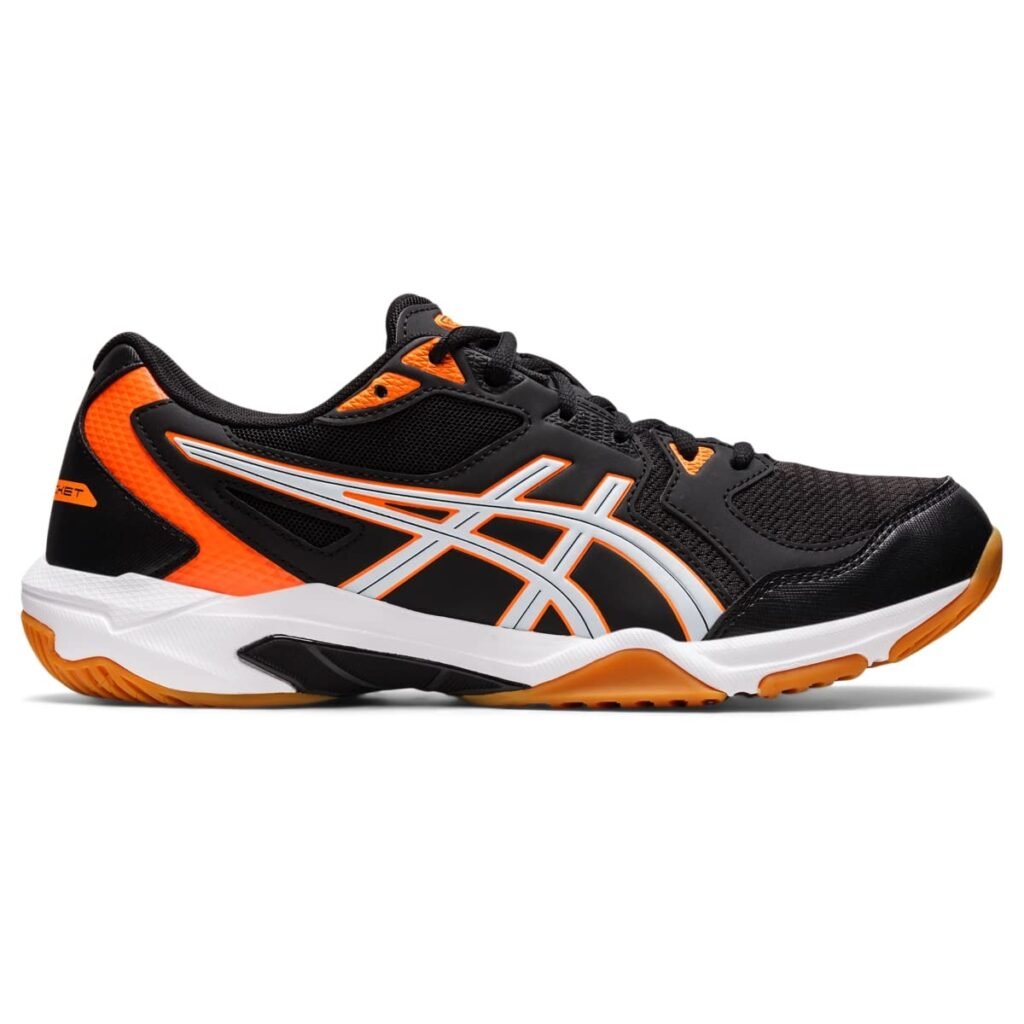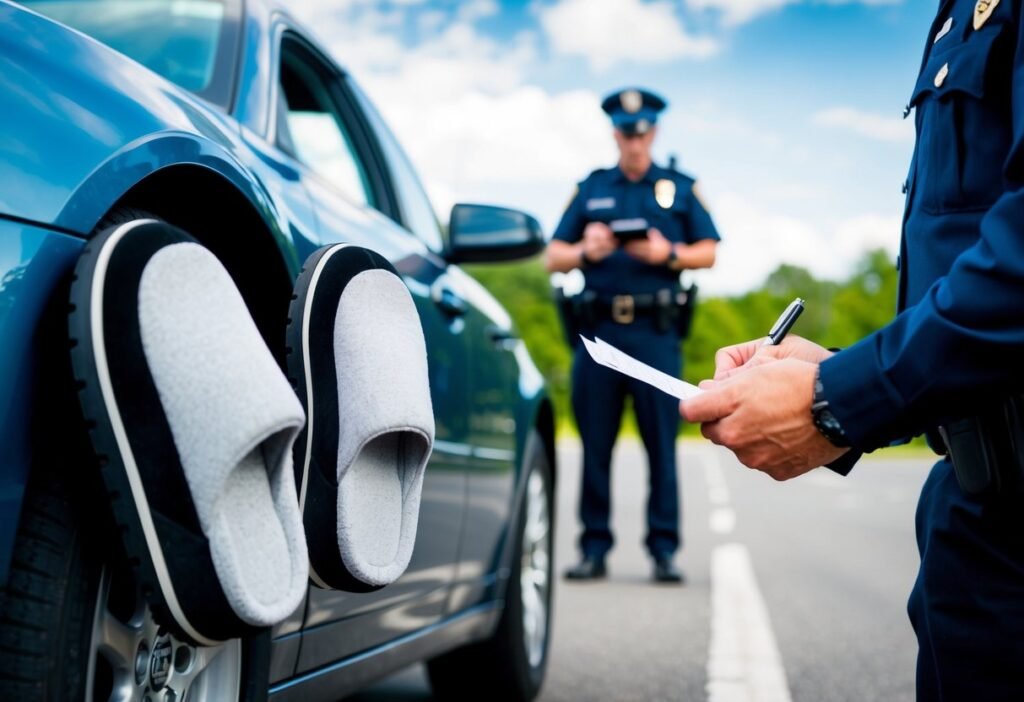Driving in Slippers: An In-depth View on Its Legality & Safety
Driving in slippers is not recommended as it can be dangerous and impair your ability to operate the vehicle safely. Slippers lack the necessary grip, support, and stability required for proper pedal control. They can easily slip off or get caught under the pedals, leading to accidents. It’s always best to wear sturdy, closed-toe shoes while driving for maximum safety.Driving in slippers is not recommended as it can be dangerous and impair your ability to operate the vehicle safely. Slippers lack the necessary grip, support, and stability required for proper pedal control. They can easily slip off or get caught under the pedals, leading to accidents. It’s always best to wear sturdy, closed-toe shoes while driving for maximum safety.
Key Takeaways
- Driving in slippers or barefoot is not explicitly illegal across the US. However, if such attire contributes to reckless or negligent driving, the driver can face legal consequences.
- While several states do not consider driving barefoot to be illegal, it is discouraged for safety reasons. Nevada, in particular, highlights that if involved in an accident, barefoot driving could be classified as a contributory factor, potentially inviting both criminal and civil penalties.
- The myth of driving barefoot being illegal stems from misconceptions and flawed information. A study undertaken by Jason R. Heimbaugh in 1994 confirmed that no state in the US outlaws driving barefoot.
- Barefoot driving can divide opinions, proving to be a contentious issue. Despite legal liberty, it presents potential risks if it detracts from driving focus or hinders effective vehicle control. Unconventional footwear could increase accident risks and ensuing legal liabilities.
- Motorcycle barefoot driving laws vary, with Alabama being the only state with specific prohibition. Other states encourage protective footwear as part of safety gear, albeit without explicit bans on barefoot riding.
- Driving barefoot or in inappropriate footwear can have significant safety implications, ranging from loss of vehicle control and distraction to serious accident risks. In the event of accidents resulting from such driving habits, legal implications, including liability for damages and potential out-of-pocket costs, could follow.
Is it illegal to drive barefoot in your state?
As we maneuver through the topic of unconventional footwear and driving, let’s explore barefoot driving laws specific to certain states. Rules and recommendations vary, revealing an interesting mix of legal standards.
Iowa, Missouri, Ohio, Tennessee, Virginia, and Wyoming do not consider barefoot driving illegal. Yet, these states actively discourage the act, citing it as potentially unsafe. Tennessee’s unique case deviates slightly, as some counties within the state have regulations prohibiting barefoot driving.
In contrast to the majority, Nevada permits barefoot driving but notes potential repercussions. If involved in an accident, barefoot driving could be classified as a contributory factor, potentially incurring both criminal and civil penalties.
Barefoot driving habits frequently hinge on perceptions. The majority of US citizens believe driving barefoot to be illegal. However, no US state distinctly outlaws the act. Despite the legal permissibility, motor vehicle organizations generally recommend shoe-wearing while driving.
Legally, it’s essential to remember that irresponsibility on the road, regardless of footwear choice, isn’t tolerated. Driving recklessly or negligently is always illegal. Should your barefoot driving result in an accident, you can expect legal repercussions.
Some law enforcement bodies argue that barefoot driving could be safer compared to wearing certain types of shoes. Flip-flops, high heels, shoes with long laces pose a risk of getting trapped under the brake or gas pedal, potentially causing accidents.
Driving barefoot isn’t explicitly illegal in any state. However, implications arise if it contributes to unsafe driving behavior. Do choose wisely when it comes to what’s touching your pedals, keeping your and others’ safety paramount.
How did this misconception get started?

Persistent myths often find their roots in misinterpretation or conjecture, and the barefoot driving legend is no exception. Some speculate that the scene of most individuals driving with shoes on laid the groundwork for this myth. A belief sprouted that footwear is a prerequisite for operating a vehicle.
Interestingly, driver education programs also played a part in cementing this misconception. During driving lessons, learners receive advice on safe driving practices. Footwear choice often arises in these discussions, further solidifying the notion that some sort of foot covering is mandatory while driving.
The myth was busted in 1994 by a gentleman named Jason R. Heimbaugh, who was associated with the University of Illinois at Urbana. Determined to find the truth behind this urban legend, Heimbaugh took an unconventional approach. He put in the legwork to write to every state in the US. To his surprise, he was informed by all fifty states that driving barefoot is not, in fact, illegal.
This extensive research work not only dispelled the widely accepted myth but also shed light on the stand of various states on barefoot driving. Although not deemed illegal, most states discourage barefoot driving, indicating that while it isn’t a punishable offense, it’s not deemed the safest choice either.
This common myth, which had enough clout to prompt a university affiliated individual to verify from all fifty states, shows how deep-rooted and widespread misconceptions can be. From receiving shoes-on guidance during driver’s ed, to the sight of fellow drivers comfortably shod, these factors nourish the premise that proper shoes are a legal requirement for driving. And myths, once seeded, have a tricky habit of not going away easily. So, despite its dismissal in 1994, the legend of illegal barefoot driving continues to persist and influence drivers’ choices.
Qualifying opinions on barefoot driving
Barefoot driving, considered unconventional by many, tends to divide opinions. Some people believe it provides more control, making it not only legal but also safer. Certainty arises from a 1994 clarification by Jason R. Heimbaugh stating that all fifty states indeed permit barefoot driving. This permission, however, does not rule out liability.
The Centers for Disease Control and Prevention provide a grim statistic: over 1000 individuals suffer injuries each day from distracted driving alone. Barefoot driving, despite not being illegal, could potentially contribute to this statistic if it detracts from driving attentiveness. While footwear choice may seem trivial, it plays a crucial role in controlling a vehicle effectively.
Practically speaking, collision risk might increase if unconventional footwear or lack of it affects driving ability. If a driver, for instance, loses control of their vehicle due to the slippage of a flip flop, legal liabilities could ensue. Such liabilities could include personal injury to other individuals, property damages, litigation expenses, and settlement payouts.
Liability insurance covers such incidents. Its role in the court is primarily to determine responsibility for the event that resulted in a claimed damage. To prevent out-of-pocket payments, many individuals and businesses hold personal injury liability insurance.
Barefoot driving, although not explicitly outlawed, comes with its risks and potential legal implications. The safety of driving barefoot or in flip flops, ultimately, depends on the individual driver’s skill and comfort level, which varies. It’s crucial to remember the importance of safe, uninterrupted driving – regardless of footwear or lack thereof.
Motorcycle laws on barefoot driving

In the context of motorcycle operation, the barefoot driving laws show more variation. It is not against federal law, yet several states have enacted specific guidelines due to the safety risks. For instance, Alabama stands as the sole state with a firm prohibition on barefoot motorcycle driving according to Section 32-5A-245(b) of the Code of Alabama.
Other states, such as Florida, New York, Texas, and California, stop short of explicit rules against barefoot motorcycle riding. Still, they propose protective footwear as part of the safety gear. California law requires wearing safety gear, potentially encompassing footwear.
In Florida, Statute 316.2085 doesn’t address barefoot riding, though any form impairing the operator’s feet control could be marked as a moving violation. Similarly, New York law promotes safety gear without mention of footwear particulars, while Texas’ TDLR Motorcycle Operators Manual recommends wearing protective footwear.
Outside the United States, Canada presents mild regulations on barefoot driving, debunking any beliefs of barefoot driving prohibition as urban myths. Canadian authorities neither impose barefoot driving bans nor endorse them, leaving the choice to the driver’s discretion.
Navigating through these different jurisdictions and norms, you can appreciate the emphasis on safety, with nudges towards protective footwear. While not universally enforced, it’s clear the push towards protective footwear represents a step towards safer motorcycle riding devoid of potential risks and liabilities.
Safety implications of driving barefoot

Safety, undeniably, remains paramount when driving. This remains true regardless of one’s footwear preferences. Driving barefoot, or with inappropriate footwear such as slippers or high-heeled shoes, presents several potential risks which impact both the driver and other road users.
First off, loss of vehicle control is a significant risk. Barefoot driving could lead to impeded foot pedal control if the foot slips or does not have a solid grip on the pedals. This lack of adequate control could increase the likelihood of accidents, potentially causing serious injuries or damage to property.
Moreover, distraction while driving is another concern. Unconventional footwear might be uncomfortable causing the driver to be distracted. The Centers for Disease Control and Prevention (CDC) cites distraction as a leading cause of accidents on American roads.
In a scenario where an accident occurs as a result of barefoot driving, legal implications could follow. Liability for damages caused by a negligent act, error, or omission laps on the covered individual. Navigating the ensuing litigation and settlement processes can be challenging, time-consuming and potentially costly.
Also, it’s essential to note that liability extends beyond civil claims. Its primary function in court is determining who is responsible for the event preceding the claim. Hence, without personal injury liability insurance coverage, individuals and companies could end up bearing substantial out-of-pocket costs in cases like these.
Furthermore, damage to the vehicle may only be covered if the policy holder has comprehensive and collision insurance. Absence of these could result in financial loss for the policyholder, particularly if the accident was caused by a barefoot driver, driving a slipper or a high-heeled shoe.
Suffice to say, driving barefoot or with inappropriate footwear may inadvertently increase the risks, costs and liabilities associated with driving. Therefore, it’s always prudent to use appropriate footwear when taking to the roads to ensure safety for all.
Why it’s dangerous to drive in flip flops or barefoot
So, we’ve learned that while driving in slippers or barefoot isn’t technically illegal, it’s certainly not the safest choice. Unconventional footwear can lead to distracted driving, a risk we can’t afford to take. We’ve also discovered that some states have guidelines against barefoot motorcycle driving. Even our neighbors in Canada have their own mild regulations on the matter.
We can’t stress enough the importance of wearing appropriate footwear while driving. It’s not just about legality—it’s about safety. Let’s reduce the risks, costs, and liabilities that come with driving. After all, we’re all sharing the road, and it’s our responsibility to keep it safe.













